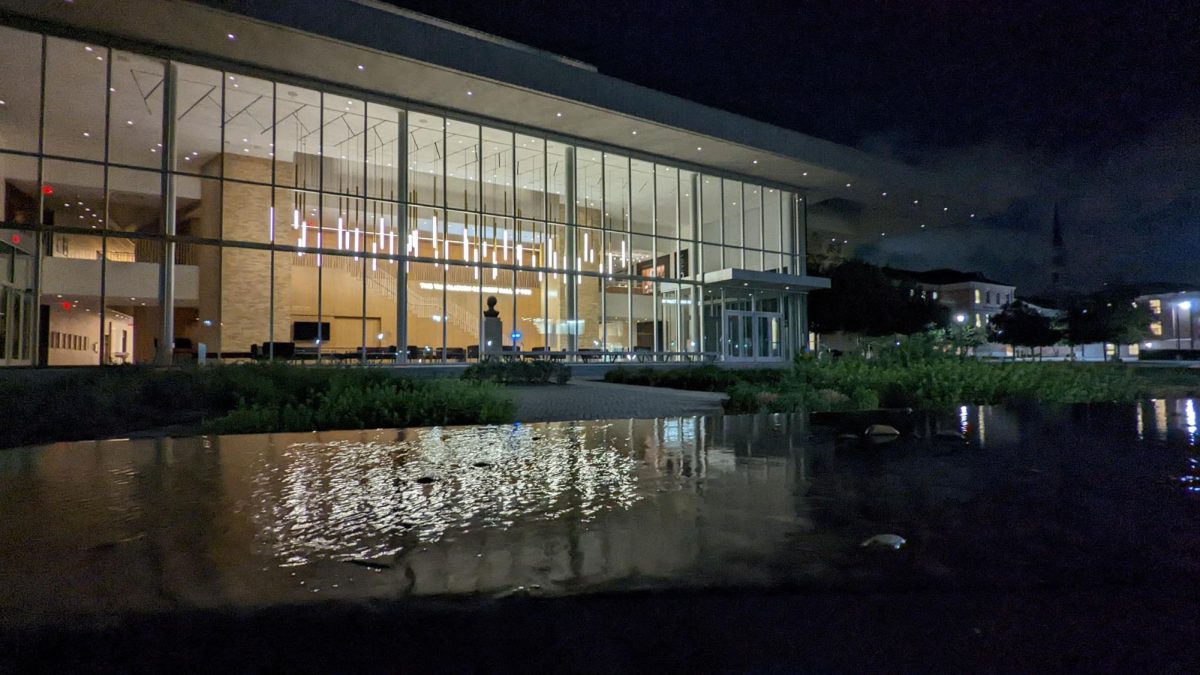It’s no secret. When the temperatures fall, so does the balance in the bank account.
We all know that buying gifts can be costly, but there are other expenses we might not expect.
Many 109 residents can enjoy lower electricity bills during the winter months because of their gas-powered heating systems. But through the combination of colossal Christmas light displays, heating blankets, space heaters and on some occasions electric central heating systems, for some 109 families, electricity bills increase after Thanksgiving.
Last year, Jessica Bolger bought newer, light-emitting diode Christmas lights to decorate her home in hopes that the more energy-efficient lights would help save money for her and her family save on their electricity bill.
According to the Energy Star website, LED lights use 90 percent less energy than the traditional lights still used by many homeowners.
In the Tanglewood neighborhood on the northeastern edge of the 109, these more energy-efficient lights have not yet taken over. Of the homes with lights displays, only a few use LEDs.
Bolger said her family had abandoned use of the lights because of their appearance.
“They were clear lights, but they had a blue tint. “ Bolger said. “And that is why we switched back.”
Bolger preferred the warmer, yellow tint of the light given off by the traditional incandescent bulbs. This year, the lights that adorn her home at the corner of
Lynncrest Drive and Harlanwood Drive are the traditional incandescent bulbs in alternating white and red.
She said to help save money on her energy bill, she has both her outdoor and indoor lights on a timer. The outdoor display is set to come on at dusk and turn off at dawn, and the lights of the Christmas tree in her front window are on from 4 to10 p.m. each night.
But it’s the type of heating system and not Christmas light displays that really raises the electricity bills.
Most of the homes in the 109 have heating systems that run on natural gas.
Bolger said she is thankful for the gas system because electrical heating systems are expensive.
Pat Hammond, a spokeswoman for Reliant Energy, said an electrical heating system costs about five times more to run than the electrical cooling system.
Terry Hadley, a spokesman for the Public Utility Commission of Texas, confirmed that natural gas heating systems are far less expensive than electrical systems.
He added that, while many apartment renters face higher bills in winter, statewide, electricity usage is at its lowest during the winter months. Most homes in Texas were built with natural gas heating systems.
“Our peak demand is typically on the hottest day of the year,” he said.
He attributed this increased usage to air conditioning systems. While most heating systems use gas for fuel, most cooling systems run on electricity.
Hadley said most Texas residents would see a decrease in their electricity bills during the winter months, with the possible exceptions of those who own homes with energy inefficient radiant heating systems, systems that use giant coils in the ceiling to generate heat. Those who use multiple space heaters might actually see an increase.
Hammond said the radiant heat systems were used in older homes and were not cost effective and differed from electric heating systems currently installed in buildings.
He said that most homes have a gas system, but many who live in apartments face huge electricity bills after winter weather has settled in.
Hadley said that, barring a light display worthy of Clark Griswold, the type of heating system would more impact an electric bill.
“Most Christmas lighting displays don’t significantly raise bills,” Hammond said.
She suggested that residents concerned about the cost of their display should do as Bolger has done and connect their lights to a timer.
She also said that her company had conducted a test and discovered that two eight-foot-tall lighted inflatable Santas would only cost about a penny an hour to run. The lights used in the Santas were incandescent bulbs.
That means that a family could enjoy its light display for 10 hours a day from Thanksgiving to New Year’s Day for about $4.
Hadley said those hoping to save money on their electric bills could also consider using the LED lights. A string of LED lights uses only four watts to run, while traditional incandescent lights use 40 watts to produce their glow.
He said the lights are more expensive initially but would save residents on their bills.
“You have to pay a higher up-front cost to get the long-term electricity savings,” he said.
A short strand of the traditional lights would cost about $2, but a similar length of LED lights would cost about $10.
It was a price Bolger paid. But for Bolger, the extra 36 watts were worth it. The LED lights just weren’t the same.
Bolger said her family typically spends about $150 a year on her light display replacing bulbs, lights or making other adjustments or repairs, but she said it’s worth it.
“The holidays are always expensive,” she said.
She said that even if her light display cost her more she would still put it up because she felt she had to.
“It’s tradition,” she said. “It makes me more cheerful. I love having the tree lit and the decorations. It just makes it feel like a family, happy environment.”
“And the kids love it.”





